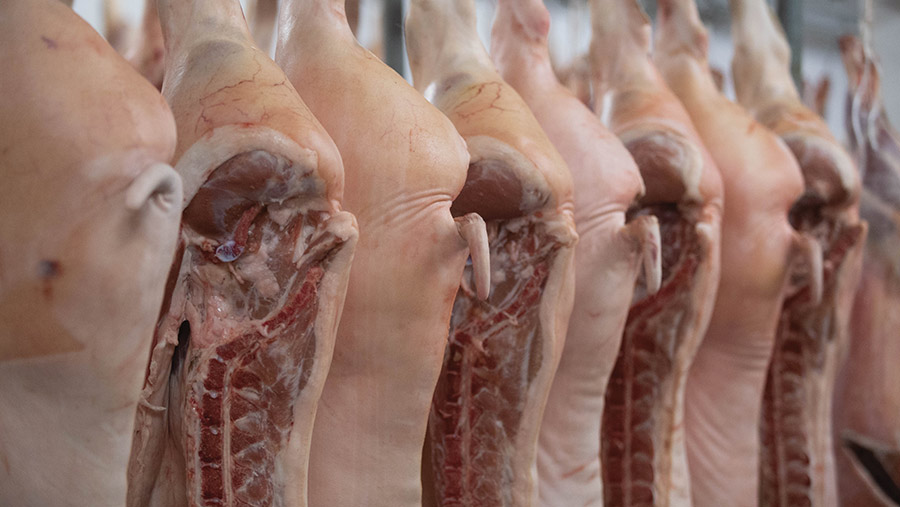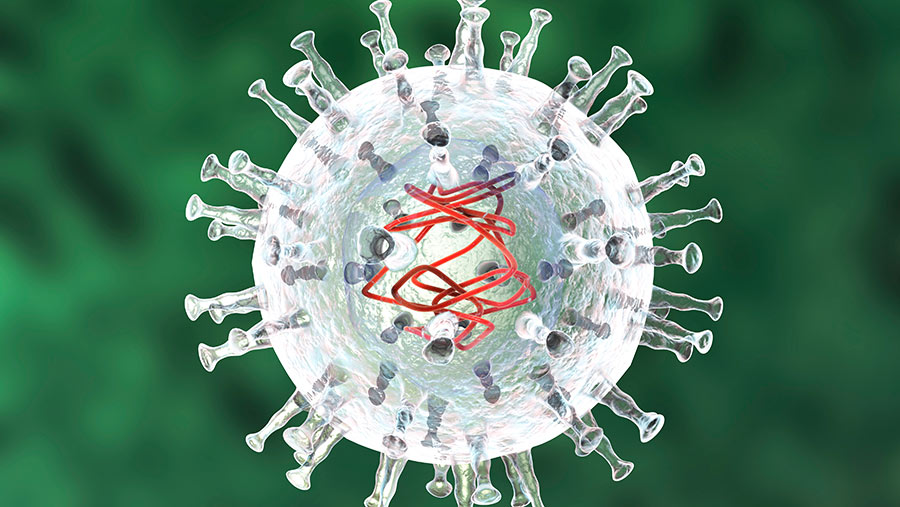Analysis: What’s the future for the UK pork sector?
 © Tim Scrivener
© Tim Scrivener Pig prices have begun to recover in 2023 and producers are starting to recoup some of the losses as they return to a more profitable position.
Finished pigs are selling for about 225p/kg deadweight, and the latest cost-of-production estimates stood at 196p/kg for the second quarter of 2023.
See also: Lower feed costs help pork producers return to profit
However, the UK breeding pig herd has already contracted considerably and the AHDB has forecast a 15% decline in pigmeat production during 2023.
Tighter supply has been supporting prices for the year to date, both in the domestic market and on the Continent, where supply is also tighter.
Farmers Weekly asked a number of industry advisers about the outlook for costs, production, trade and disease risk for the sector.
Input costs
Harry Batt, a consultant at Andersons, says pig producers could face another tough winter, with input prices likely to increase.
“Feed is being affected by world trade, drought and wildfires across Europe. Low forage stocks and increased wholecropping of cereal crops will further reduce grain supply in the UK,” he says.
“A shortage of UK combinable crops due to increased wholecropping could also push straw prices up this winter.”
Spot prices for UK feed wheat stood at £180/t on 2 August, up £10/t on the previous month, but still down almost £50/t since the beginning of the year.
Harry says finance costs have also increased and will vary between businesses, but he warns that with some costs up by about 300%, they are likely to provide a significant challenge to businesses.
“In addition, some producers have seen an additional requirement for more working capital as a result of the negative margins,” he says.
“Fuel prices appear to have significant variation and I would encourage producers to review the market before making decisions.”
Brent crude oil stood at US$84.80 (£66.67)/barrel on 3 August, up 14% on month-earlier levels.
Supply
Numbers in the UK breeding herd remain tight compared with previous years, despite some early signs of growth.
Harry says there could be a further contraction in the breeding herd in the long term before we see a settled industry with margins still not sufficient to overcome the loss-making experienced in the past few years.
“Future investment in technology and emission compliance is likely to add greater cost to producers going forward,” he adds.
However, a gradual recovery is still expected in the breeding herd, according to AHDB senior analyst Freya Shuttleworth, with numbers predicted to have increased by 7,000 head between June 2022 and June 2023.
National Pig Association chief executive Lizzie Wilson says that while a recovery in sow and slaughter numbers is expected, it will be slow and cautious, especially as many producers are unsure of the post-Brexit legislative framework.
Ms Wilson says: “There is definitely more positivity throughout the sector, but also a lot of uncertainty about whether the higher pig price will be maintained for long enough to allow producers to recoup their significant losses.
“And with more attractive cull sow prices, there may be some producers making the decision to exit in the next few months, to be able to pay off their debts as well as potentially making a small margin.”
Trade
Both UK import and export volumes of pork have fallen so far in 2023.
HMRC trade data showed that the UK exported 127,500t of pork in the first five months of the year, down from 168,000t during the same period last year. However, the total value of exports remained fairly level due to higher prices.
Freya says: “UK pork production has been severely affected by the market conditions of the past two years, leading to tight domestic supplies. This has had a direct impact on our trading volumes, with less product available for export.”
Further risks
Despite some early signs of recovery for the pig sector, Freya says there are still plenty of challenges the sector will need to overcome.
She adds: “In the short term, the cost-of-living crisis continues to dampen demand while the risk of a disease outbreak remains ever present.
“In the longer term, volatile input prices are a key watch point, and domestic processing capacity stays in the industry’s focus given recent announcements regarding abattoirs at risk of closure.”
Disease
African swine fever (ASF) remains a major risk to the UK pig sector, as the disease is already prevalent in many European countries.
According to Defra’s latest outbreak assessment, ASF has continued to be reported in domestic pigs and wild boar in Europe, with cases being confirmed for the first time on domestic pig farms in Croatia and Bosnia and Herzegovina.
The disease report also said ASF had been confirmed in domestic pigs on more premises in Italy, Greece and Poland.
Lizzie says the recent jump in cases in Italy is believed to be human-mediated, which demonstrates how easily the disease can be transmitted to animals a long distance away.
“Moves into Croatia, Greece and Bosnia and Herzegovina also show how the disease can easily cross borders,” she adds.
The virus can survive for long periods of time and up to 1,000 days in frozen meat, Lizzie points out, and as such it could easily be brought into the UK (See panel “Four key areas to reduce African swine fever risk”).
Four key areas to reduce African swine fever risk
The National Pig Association (NPA) has outlined four key areas for government and industry to improve in order to reduce the risk of an African swine fever (ASF) outbreak.

© Dr Microbe/Adobe Stock
- Improving national biosecurity by implementing stricter border measures on pork entering the UK. The NPA said while work has been done to introduce some border checks, illegal imports remain the biggest risk given the checks in place with those commercially importing pork.
- More communication is needed to raise awareness among people coming into the country from areas with ASF. NPA chief executive Lizzie Wilson said Defra undertook a pilot communications programme in the spring which focused on people travelling into the UK from Romania, and the NPA would like to see more resources for these types of awareness projects.
- The NPA is calling on the government to have agreements in place for regionalisation to ensure that if ASF does enter, the whole of the UK doesn’t lose access to key export markets. This would have major economic implications for the UK pork sector, with exports worth more than £623m in 2022.
- Volatility mitigation to reduce the economic effects on producers if an outbreak occurred is also critical in order to ensure the long-term viability of the sector.
Source: National Pig Association
Global pork outlook
Global pork consumption is expected to remain soft in the second half of 2023, with weaker trade expected according to global co-operative bank Rabobank.
Chenjun Pan, senior analyst in animal protein at Rabobank, says pork consumption in Europe remains under pressure due to ongoing high prices.
“In the US, demand was slightly below expectations to start the summer, as unco-operative weather and poor air quality challenged the start of the grilling season.
“And in China, pork consumption remains weak due to the underperforming economy and heat waves across the country,” she says.
“For the second half of 2023, we expect global trade to be weaker than in the same period last year, as inventories of frozen pork are high in China due to weak consumption, pressuring imports.
“Also, tighter supply in the EU restricts shipments out of the region.”
In the US, the number of breeding and finished pigs remain stable and in line with year-earlier levels, according to the US Department of Agriculture (USDA) latest outlook.
However, farrowing intentions are down in the US for the summer and autumn in 2023, which is forecast to lead to lower production in the first half of 2024.
The USDA expects US exports to Europe to become more competitive due to comparatively higher prices in Europe and a favourable exchange rate.
